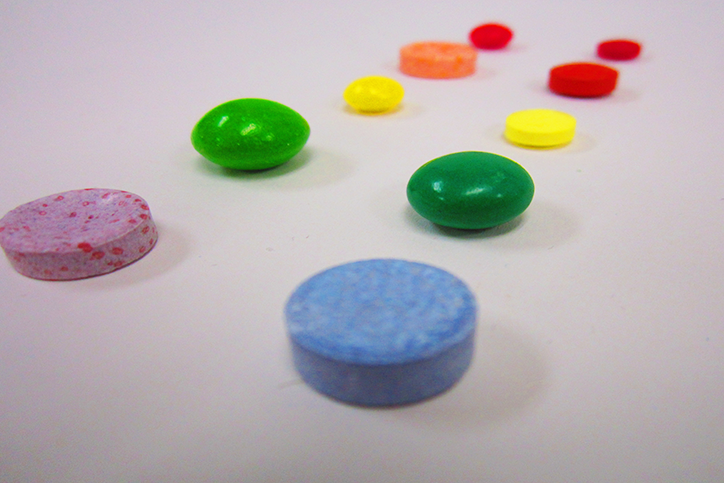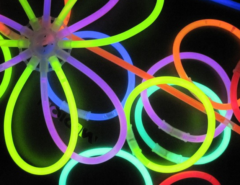Children under the age of six accounted for 36% of cases at the Maryland Poison Center (MPC) in 2019. One common reason for unintentional exposures in children is that they are not able to tell the difference between products that look alike.
Look-a-Like Products
Cleaning products and their labels have bright, vibrant colors. Some of the liquids look just like juice, sports drinks, and soda as well. The fragrance of many of these products is also appealing, mimicking foods and drinks. And, if we take a closer look at the packaging, we’ll see that some bottles have the same shape and contours as energy drinks and vitamin waters. Remember, most children under the age of six cannot read well enough to know that the bottle contains a cleaner and should not be consumed.
Many medicines also look like candy, especially to young children who have experienced the joy of candy. They know candy is tasty and are in search of more. They do not realize that every shiny green bite-size item is not an M&M® or Skittles®. Some medicines even have kid-friendly flavors and shapes to make giving the medicine easier.
Mushrooms and berries found outdoors also have other look-a-likes in the store. Most mushrooms that are safe to eat can look similar to other mushrooms that are poisonous. Leave mushroom hunting to the experts and only eat mushrooms bought from the store. Picking berries and eating them while hiking with young children seems like a fun idea, but can often lead to confusion. Young children cannot tell safe berries from potentially harmful ones. This activity should be reserved for older children who can be taught which berries are safe and which are not. Teach young children to ask before putting any plant, berry, or mushroom in their mouth.
Safe Storage
One question our experts are often asked is: how can we decrease the chance that a child will be confused by a look-a-like product? We recommend following the steps listed here:
- Containers are child resistant, not “child-proof.” Given enough time, most children will be able to get the top off of a child-resistant container. Store all cleaning products and medicines up, away, and out of sight from young children.
- Never call medicine “candy”; this will only add to your child’s confusion.
- Store medicines in their original containers.
- Never use a baggie to store medicine in a purse, briefcase, or diaper bag. Children associate baggies with treats. When they come across a baggie of pills, they might think it is candy.
- Daily pill reminders are not child-resistant and should be stored up, away, and out of sight.
Stop, Ask First
Teach young children to “Stop, Ask First” before touching, tasting, or smelling something. These three simple words, repeated often, will increase the chance that your child will remain safe when they come across a potential poison.
Watch this YouTube video with your children to teach them how to be poison safe:
The MPC also has activity sheets available for children of all ages. They’re a fun way to teach children poison prevention. Find these activity sheets on our website.
As always, if you suspect that your child has gotten into a medicine, cleaning product, or other poison, contact the MPC right away at 1-800-222-1222. Poison experts are available 24 hours a day, 7 days a week to help. The call is fast, free, and confidential.





Leave a Reply